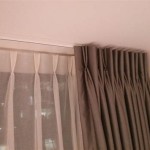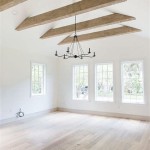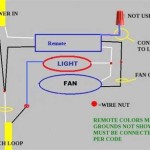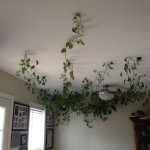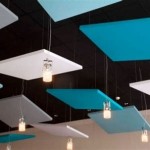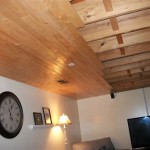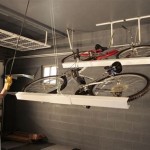A Guide To Ceiling Light Without Wiring In Houses
Illuminating a space effectively is crucial for both functionality and aesthetics. While traditional ceiling lights typically require complex wiring installations, various innovative solutions exist that allow for ceiling lighting without the need for extensive electrical rewiring. This article explores different methods for achieving ceiling light without wiring, offering insights into their advantages, disadvantages, and installation considerations.
Understanding the Limitations of Traditional Wiring
Traditional ceiling lights are hardwired directly into a home's electrical system. This process involves connecting the light fixture to existing wiring within the ceiling, often requiring accessing junction boxes and potentially running new wires from a power source. While hardwired lights offer a permanent and reliable lighting solution, they also present several limitations, particularly when retrofitting lighting into existing homes or in situations where altering the existing electrical infrastructure is either undesirable or impractical. These limitations include:
- Cost: Hiring an electrician to install or move hardwired ceiling lights can be expensive, particularly if new wiring needs to be run.
- Complexity: The installation process can be complex and time-consuming, potentially requiring cutting into walls and ceilings.
- Disruption: Installing hardwired lights can be disruptive to daily life, as it may involve power outages and potentially messy construction work.
- Permanence: Once installed, hardwired lights are relatively permanent, making it difficult to change their location or configuration without further electrical work.
- Rental Restrictions: Renters often face restrictions on making permanent alterations to their rental properties, including installing hardwired ceiling lights.
The methods outlined below are viable alternatives to overcome these constraints.
Wireless Ceiling Light Options: Battery-Operated Fixtures
Battery-operated ceiling lights offer a direct and straightforward solution for adding illumination without the need for wiring. These fixtures typically use LED bulbs, which are energy-efficient and provide a long lifespan, minimizing the frequency of battery replacements. Battery-operated lights are easy to install, often requiring only mounting hardware like screws or adhesive strips.
There are several types of battery-operated ceiling lights available, including:
- Puck Lights: Small, disc-shaped lights that can be easily mounted on the ceiling. They are typically powered by AAA or AA batteries and controlled by a remote or a simple on/off switch.
- Motion-Activated Lights: These lights turn on automatically when motion is detected, making them suitable for hallways, closets, and other areas where temporary illumination is needed.
- Remote-Controlled Lights: These lights can be controlled remotely, allowing users to adjust the brightness or turn the lights on and off from a distance.
Advantages:
- Easy Installation: No wiring required, making installation quick and simple.
- Portability: Can be easily moved or repositioned as needed.
- Cost-Effective: Eliminates the need for electrical work, saving on installation costs.
- Suitable for Rentals: Perfect for renters as they do not require any permanent modifications.
Disadvantages:
- Battery Replacements: Requires regular battery replacements, which can be inconvenient and add to the overall cost.
- Brightness Limitation: May not provide the same level of brightness as hardwired lights.
- Aesthetic Constraints: The design options available may be limited compared to hardwired fixtures.
Considerations for battery-operated ceiling lights include the type of batteries required, the lifespan of the batteries, and the brightness of the light. Choosing lights with long-lasting LED bulbs and energy-efficient designs can help minimize battery consumption.
Plug-In Pendant Lights and Swag Kits
Plug-in pendant lights offer a stylish and versatile solution for adding ceiling light without wiring. These fixtures consist of a pendant light fixture attached to a cord that plugs into a standard electrical outlet. Swag kits are typically used to hang the pendant light from the ceiling and conceal the cord, creating a more aesthetically pleasing appearance.
The installation of plug-in pendant lights and swag kits involves:
- Mounting the Hook: A hook or mounting bracket is attached to the ceiling to support the pendant light.
- Draping the Cord: The cord is draped along the ceiling and walls, using swag hooks or cord covers to conceal it and create a decorative effect.
- Plugging In: The cord is plugged into a nearby electrical outlet.
Advantages:
- Easy Installation: Does not require wiring, making installation relatively simple.
- Versatile Design: Available in a wide range of styles and designs to suit different aesthetics.
- Adjustable Height: The height of the pendant light can be easily adjusted to suit the space.
- Minimal Disruption: Installation is quick and does not require any major construction work.
Disadvantages:
- Cord Visibility: The cord may be visible, although swag kits can help to conceal it.
- Outlet Dependence: Requires access to a nearby electrical outlet.
- Weight Limitations: The weight of the pendant light must be supported by the ceiling and the mounting hardware.
When choosing plug-in pendant lights, consider the style of the fixture, the length of the cord, and the type of bulb required. Ensure that the mounting hardware is appropriate for the ceiling material and that the cord is safely secured to prevent tripping hazards.
Using Rope Lights and LED Strip Lights
Rope lights and LED strip lights offer a flexible and customizable solution for creating ambient ceiling lighting without wiring. These lights consist of a series of small LED bulbs encased in a flexible tube or strip, which can be easily mounted on the ceiling using adhesive clips or other mounting hardware.
The installation of rope lights and LED strip lights involves:
- Planning the Layout: Determine the desired layout of the lights, considering the shape and size of the room.
- Mounting the Lights: Attach the lights to the ceiling using adhesive clips or other mounting hardware.
- Connecting to Power: Plug the lights into a nearby electrical outlet or connect them to a battery pack.
Advantages:
- Flexibility: Can be easily bent and shaped to fit different spaces.
- Customization: Available in a wide range of colors and brightness levels.
- Energy-Efficient: LED bulbs are energy-efficient and have a long lifespan.
- Easy Installation: Simple to install with adhesive clips or other mounting hardware.
Disadvantages:
- Aesthetic Limitations: May not provide the same level of brightness or aesthetic appeal as traditional ceiling lights.
- Lifespan Variations: Quality can vary, impacting lifespan and brightness.
- Power Source: Requires access to an electrical outlet or battery pack.
Considerations for rope lights and LED strip lights include the brightness of the lights, the color temperature, and the length of the strip. Choose lights with a high lumen output for brighter illumination and a color temperature that complements the existing décor. Ensure that the lights are safely secured to the ceiling to prevent them from falling.
Alternative Lighting: Table Lamps and Floor Lamps
While not strictly ceiling lights, strategically placed table lamps and floor lamps can provide adequate illumination and create a warm and inviting atmosphere in a room. This approach eliminates the need for any ceiling lighting installations, wired or wireless.
Advantages:
- Versatility: Can be easily moved and repositioned to suit different needs.
- Variety: Available in a wide range of styles and designs.
- Accessibility: No installation required, simply plug in and use.
- Adjustable: Many lamps offer adjustable brightness settings.
Disadvantages:
- Space Consumption: Takes up floor or table space.
- Light Distribution: May not provide the same level of overall illumination as ceiling lights.
- Aesthetic Integration: Requires careful consideration of placement and style to complement the room's decor.
Consider the height and placement of the lamps to maximize their effectiveness. Tall floor lamps can provide ambient lighting, while table lamps can be used to illuminate specific areas, such as reading nooks or work spaces.
Solar-Powered Ceiling Lights
Solar-powered ceiling lights are an environmentally friendly option that eliminates the need for both wiring and batteries. These lights feature solar panels that collect sunlight during the day and store it in rechargeable batteries. At night, the lights automatically turn on, providing illumination without any electricity costs.
Advantages:
- Environmentally Friendly: Uses solar energy, reducing reliance on electricity.
- Cost-Effective: No electricity costs and minimal maintenance.
- Easy Installation: No wiring required, making installation simple.
- Automatic Operation: Automatically turns on and off based on ambient light.
Disadvantages:
- Sunlight Dependence: Requires sufficient sunlight to charge the batteries.
- Brightness Limitations: May not provide the same level of brightness as traditional ceiling lights.
- Initial Investment: Can be more expensive than other wireless lighting options upfront.
When choosing solar-powered ceiling lights, consider the size of the solar panel, the capacity of the batteries, and the brightness of the light. Ensure that the lights are placed in an area that receives ample sunlight throughout the day.
By carefully considering the advantages and disadvantages of each method, individuals can effectively illuminate their homes without the complexities and costs associated with traditional wiring.

How To Install Ceiling Light Without Existing Wiring

How To Install A Ceiling Light Fixture Diy Family Handyman

How To Install Modern Ceiling Lights

How To Install A Ceiling Light Fixture Diy Family Handyman

How To Install A Light Fixture Diy Home Improvement

Ceiling Light Designs For Your Home Decorative Lights

How To Replace Install A Light Fixture The Art Of Manliness

How To Install A Ceiling Fan Without Existing Wiring

How To Wire A Ceiling Light And Install New Fixture

How To Wire A Ceiling Light And Install New Fixture
Related Posts


